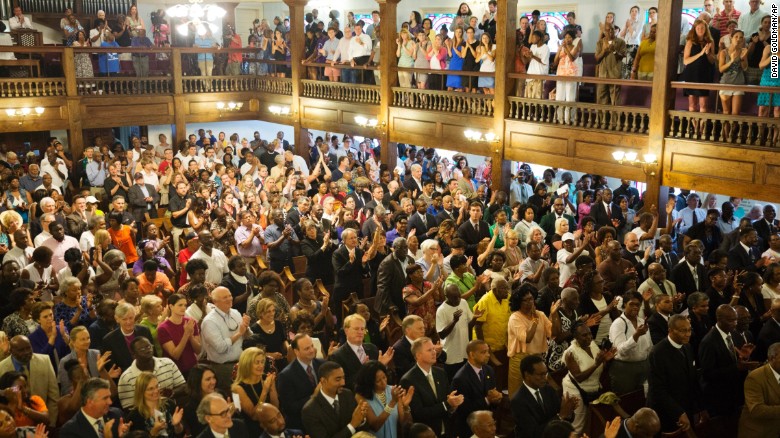
For me, the present horror of South Carolina is that we still live in a country where black people are slaughtered because of the color of their skin.
For me, the future horror of South Carolina is that the tools of hatred will only become more effective. Instead of a gun, a homicidal and racist 21-year-old may have access to a nuclear weapon, synthetic virus, or some other yet to be invented technology.
Imagine if Dylann Roof had the means to exterminate a nation.
___
In some sense, we are in a race between the preventative tools of culture, medical science, and surveillance – and the massive damage that can be ushered in by advanced technology.
A more benevolent culture may reduce the presence of subcultures of hate. There is some evidence that the world is becoming more tolerant; a continuation of this trend would bode well for us all.
Better medical science may help us identify and cure (or isolate) those with a propensity for mass murder.
Better surveillance may help us track and suppress weapons of mass destruction, as well as those who use them.
The tensions here are clear: trust, love, liberty, and safety will be at odds with each other.
___
There is a theory that a society’s values are ultimately shaped based on the predominant technologies of the era. In human history, we’ve had hunter gatherer values, farmer values, and industrial revolution values.
What scares me about the future is that our values may not adapt fast enough to ensure our survival in a new technological era.
What happened in South Carolina is a horrific reminder of what happens when a society’s values, science, and surveillance lose to a society’s darkness.
June 17th, 2015 was a dark day.

Well said.
What if the discussion weren’t about technology? What if it were about young people?
Is the technology component of this a common household item that’s been around for 180 years? Is the problem devices that were thoroughly available in 1935, 1955, 1975?
Or does the technology component of this tragedy have more to do with satellite transceivers, hand-held supercomputing graphical processors, and instantaneous worldwide video?
The comparison has been made to Charles Manson’s objective of Helter Skelter. I don’t know how far that analogy goes. The sketchy picture of the perpetrator is a troubled youth with a minimum of plotting before becoming a one-man martyr to a race war. It seems like another-perverse-nod to the sixties by a clearly
What, though, if the discussion were about how we train young people to value human life? What If we reconsidered constantly making farce out of institutions designed to take on just that role?
We are somehow today shocked that a young man would shoot people in a church. That he violated the sanctity of that space.
Yet the rest of the year we tolerate, if not encourage, those who use academic credentials to belittle religion of all kinds. We let Steven Hawking and deGrasse Tyson become even more superstar for their telling of young people that faith is a mistake.
Which is it? Is a church sacred or no?
Is the issue today about guns? (The President and Morning Joe say Yes!) Or is it about the heads of the young people in an age of omnipresent video violence and instantaneous video fame?
LikeLike